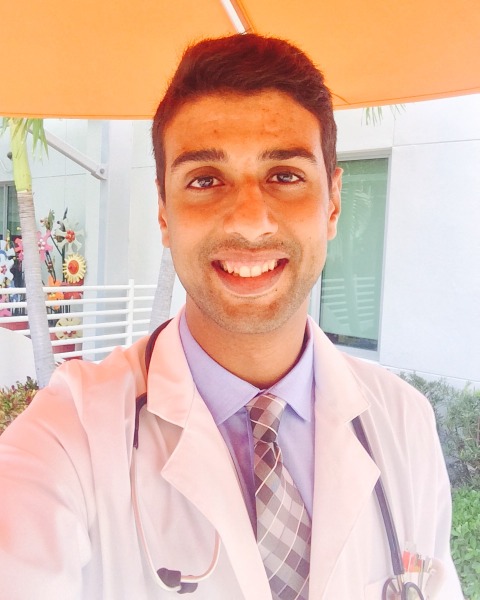Back
Poster Session E - Tuesday Afternoon
E0574 - Severe Immune-Mediated Liver Injury Following COVID-19 Vaccination Necessitating Liver Transplantation in a Patient With Cirrhosis
Tuesday, October 25, 2022
3:00 PM – 5:00 PM ET
Location: Crown Ballroom

Adel Farhoud, MD
Lahey Hospital & Medical Center
Burlington, MA
Presenting Author(s)
Introduction: Pfizer COVID-19 vaccine (C19V) uses mRNA encoding SARS-CoV-2 spike protein to elicit antibody response. Recent literature documented temporal correlation between C19V and immune-mediated liver injury (ILI). The proposed mechanisms are molecular mimicry and immune cross-reactivity in genetically susceptible individuals. All had an excellent response to corticosteroids (CS). We present a case of severe ILI post C19V in a patient (pt) with compensated alcohol-associated cirrhosis who failed CS and needed liver transplantation (LT).
Case Description/Methods: 65 yo Caucasian male with epilepsy and coronary artery disease presented with jaundice and ascites on day 10 after first C19V. He had 30+ years of excessive alcohol use. No known liver disease and had normal liver enzymes prior. On levetiracetam, metoprolol, ramipril, aspirin and omeprazole for years. Denied any new medications or herbals. No family history of autoimmune diseases. Admission labs: AST 1,786, ALT 1,613, ALP 182, TB 9, INR 2.1, Cr 0.7; negative hepatitis A, B, C, CMV, EBV, HIV; positive ANA, ASMA, AMA; total IgG of 1310. CT abdomen: heterogeneous liver with steatosis and mild nodularity, splenomegaly, ascites, patent vasculature, and no biliary dilation. Liver biopsy: marked portal and lobular inflammation with interface hepatitis and lymphoplasmacytic infiltrates, confluent necrosis with hemorrhage, balloon degeneration, cholestasis and reticulin collapse. Pt deteriorated and developed hepatic encephalopathy and acute kidney injury (Cr 2.6) despite high dose CS. MELD-Na peaked at 45 and pt had deceased donor LT 53 days post C19V. Explant: cirrhosis with cholestasis and chronic inflammation.
Discussion: mRNA-based vaccine has been associated with increased risk of immune mediated disease, attributed to intrinsic immunostimulatory effect and proinflammatory cytokine activation. C19V associated ILI in this case is supported by time to onset, lack of autoimmune risk factors or other causes of liver injury, liver histopathology and case reports of similar findings. Our pt did not respond to CS. We postulate C19V induced ILI triggered intense systemic inflammation and immune dysfunction that led to acute hepatic decompensation and organ failure in this pt with compensated cirrhosis (i.e acute on chronic liver failure). To our knowledge, this is the first report of severe ILI following C19V necessitating LT in a cirrhotic pt. We wish to raise awareness of ILI as a potential complication of C19V but not to discourage vaccination.
Case Description/Methods: 65 yo Caucasian male with epilepsy and coronary artery disease presented with jaundice and ascites on day 10 after first C19V. He had 30+ years of excessive alcohol use. No known liver disease and had normal liver enzymes prior. On levetiracetam, metoprolol, ramipril, aspirin and omeprazole for years. Denied any new medications or herbals. No family history of autoimmune diseases. Admission labs: AST 1,786, ALT 1,613, ALP 182, TB 9, INR 2.1, Cr 0.7; negative hepatitis A, B, C, CMV, EBV, HIV; positive ANA, ASMA, AMA; total IgG of 1310. CT abdomen: heterogeneous liver with steatosis and mild nodularity, splenomegaly, ascites, patent vasculature, and no biliary dilation. Liver biopsy: marked portal and lobular inflammation with interface hepatitis and lymphoplasmacytic infiltrates, confluent necrosis with hemorrhage, balloon degeneration, cholestasis and reticulin collapse. Pt deteriorated and developed hepatic encephalopathy and acute kidney injury (Cr 2.6) despite high dose CS. MELD-Na peaked at 45 and pt had deceased donor LT 53 days post C19V. Explant: cirrhosis with cholestasis and chronic inflammation.
Discussion: mRNA-based vaccine has been associated with increased risk of immune mediated disease, attributed to intrinsic immunostimulatory effect and proinflammatory cytokine activation. C19V associated ILI in this case is supported by time to onset, lack of autoimmune risk factors or other causes of liver injury, liver histopathology and case reports of similar findings. Our pt did not respond to CS. We postulate C19V induced ILI triggered intense systemic inflammation and immune dysfunction that led to acute hepatic decompensation and organ failure in this pt with compensated cirrhosis (i.e acute on chronic liver failure). To our knowledge, this is the first report of severe ILI following C19V necessitating LT in a cirrhotic pt. We wish to raise awareness of ILI as a potential complication of C19V but not to discourage vaccination.

